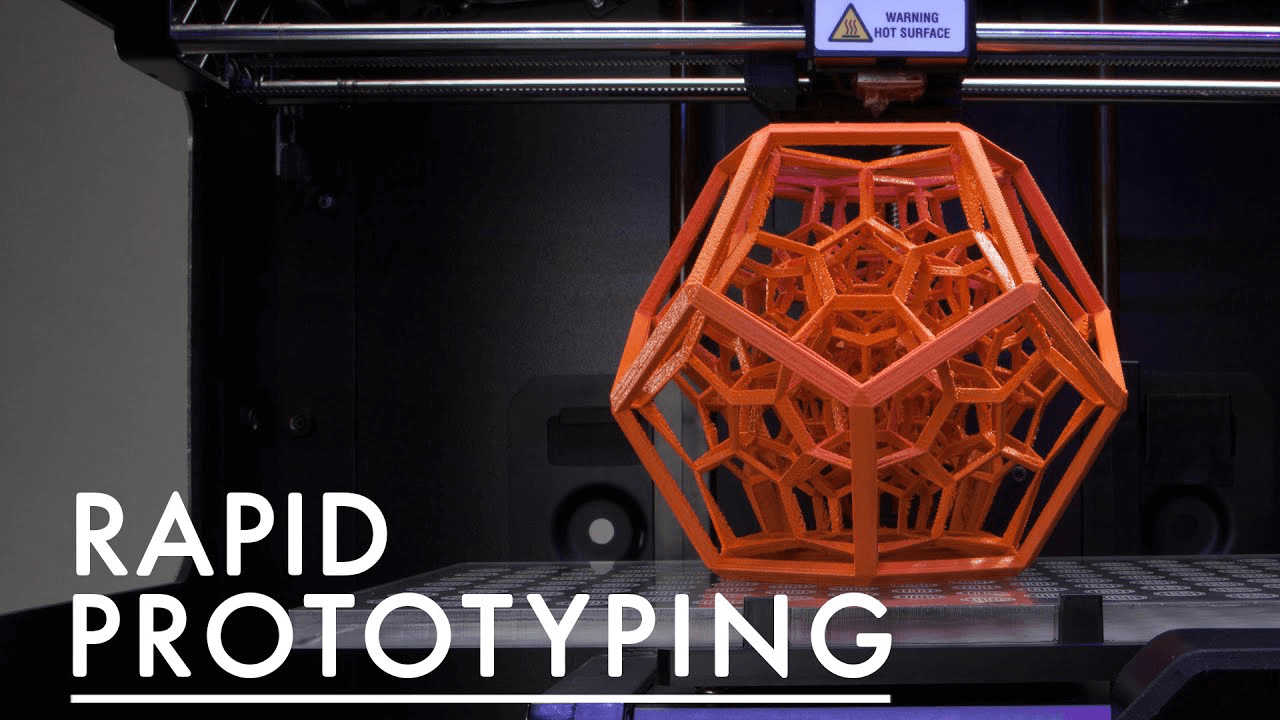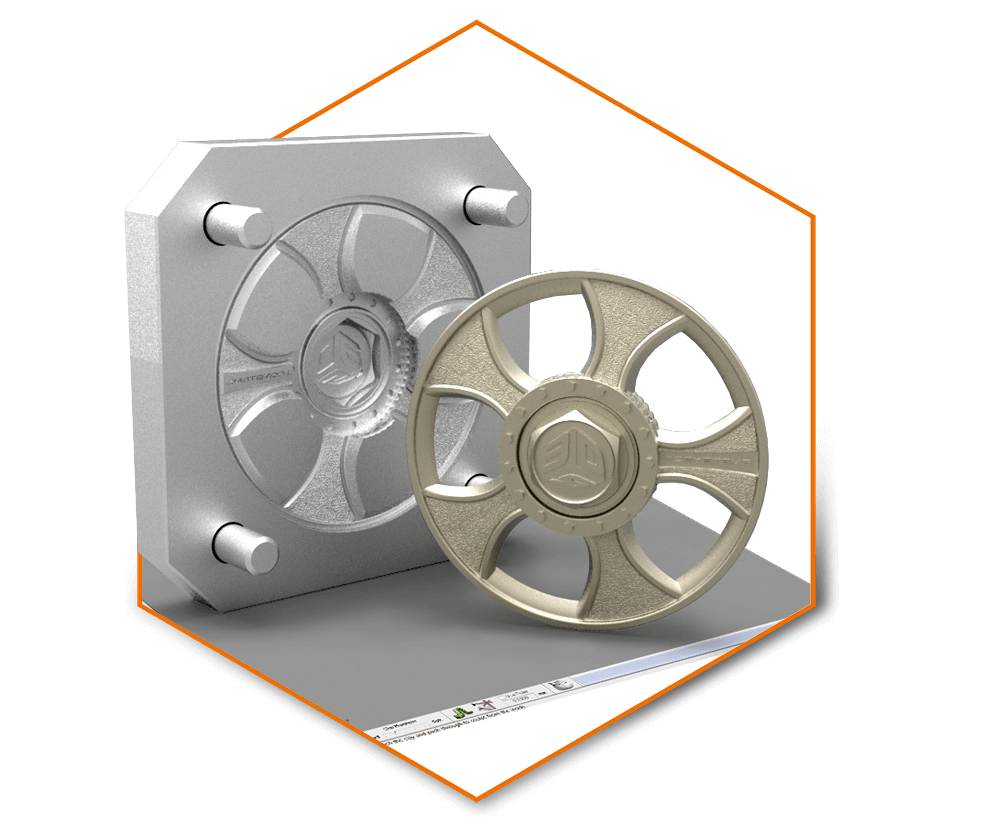5 Factors for Choosing Professional Rapid Prototyping Method in 2020
2020-06-07Professional Rapid Prototyping: 5 Technique Selection Factors
A professional rapid prototyping manufacturer fully comprehends the fact that the failure or success of the prototype greatly depends upon the selection of prototyping techniques. When it comes to rapid prototyping, you have several ways to make up the product design.
You can either go with the simple cardboard mock-ups or the full functional machine assembled product. For modern-day products, prototyping has become imperative. This is crucial for new product development.
Rapid prototyping offers the facility to validate your design. It provides you with a rough model, thus allowing you to test its functionality. Moreover, you would get a précised idea of how your product would look, feel, and work in a real-time environment.
In this blog post, we are going to talk about part-base prototypes. In simpler words, we will tell you how you can use individual parts to create a system-level prototype.
Five Key Factors for Professional Rapid Prototyping Process
Since every product is unique, thus it will offer unique prototyping experience. The difference in every product, project, and product design elements, needs proper consideration.
A certain prototype that worked well for an XYZ product, might not generate the same effective results of your product. Therefore, you need to consider the five key factors below to make the right decision.
- Purpose
- 品質
- 量
- 複雑
- 費用
Let’s look deep into these factors and understand why they are important for choosing your next prototyping process.
Purpose
According to Ulrich and Eppinger, there are four reasons for creating a prototype within the engineering and development of product design as well as the product. These four reasons include communication, learning, milestones, and integration.
The purpose of prototyping varies depending on the development stage of the product. Generally, there are four different product development stages. Every stage of product development has its own features as well as the functionality required to eliminate any sort of risk.
This would give away the fidelity type of the prototype i.e. low-fidelity or high-fidelity. The first aspect of the project prototype purpose would depend upon either the risk mitigation exercises or the planned tests.
For instance, customer interaction feedback, or test types, etc. In case, the prototype is going to go through rigorous testing, then it is important to focus on the material. After all, the material would be a deciding factor in choosing the rapid prototyping technique.
Next, you need to focus on the functional aspect of the prototype. The selection and assembling would greatly depend upon the functional expectations of the prototype. Such as, do you want any moving part of your plan to perform functional testing.
It is highly less likely that your prototype becomes successful without any tweaks. Thus, you need to consider the changes and modification factors in your mind. It is important to consider how easy or difficult it would be to make changes to the prototype.
Doing this would also aid in deciding the right prototyping technique.
The Product Development States
Product Clarifying and Planning Task
This is the stage where you will have to provide early proof of concepts. Use industrial design prototypes, demonstrations or mock-ups.
Prototyping Technique
- 3D Printed Parts
- Carboard Mockups
- CNC Machined Foam Models
- Assemblies (SLS, SLA, FDM, etc)
Conceptual Design
At the conceptual stage, you generally require scaled parts. In some cases, you would need assemblies of the design as well as limited functionality and user interface.
To get the shape, and feel of the product, you can use the FDM part. In case, you want more accuracy, you would have to move to the next level of 3D printing. Either choose the SLS, or go with the SLA. You also have the option of poly jet parts.
In case, you want metal parts, then using CNC machine at this stage would be an excellent thing to do. Furthermore, you can even consider sheet metal fabrication. However, sheet metal fabrication works in limited situations.
Embodiment Design
In this phase, you would be exploring the full functionality of the prototype. A professional rapid prototyping manufacturer would be looking into its fit, form, and functions. Therefore, focusing on details is imperative. At this stage, the prototypes would be as similar to the final product as possible.
They would be containing several parts. Also, the testing phase expands here. You cannot limit your self to just a single testing technique. On the contrary, you would be needing different units for different testing purposes.
You would also be considering the final technique for manufacturing at this stage. The reason being, you would have to stimulate it eventually. Also, focus on high-resolution printing such as SLA and SLS for plastic parts.
真空鋳造に注意を払うことも重要です。DMLS鋳造パーツのシミュレーションに最適です。
詳細設計
このフェーズで開発されたプロトタイプはすべて、機能テストに使用されます。 さらに、実動前のパイロット実行に使用されます。
プロのラピッドプロトタイピング製造では、真空鋳造を使用して射出成形部品のプロトタイプを作成します。 機械加工されたプラスチック部品の場合、3D印刷技術を使用します。
品質
上で述べたように、必要な製品の精度と忠実度によって、後処理またはプロセスのタイプが決まります。プロトタイプが必要になります。 プロトタイプの品質にも焦点を当てる必要があります。
忠実度の高いプロトタイプは高価ですが、プロのラピッドプロトタイピング製造業者はそれらを投資収益率と見なしています。 たとえば、スレッド機能が必要な場合は、FDMの代わりにSLAを使用することをお勧めします。 残念ながら、SLAはより多くの費用がかかります。
プロトタイプの使用法
使用するテクノロジーの種類は、プロトタイプの使用法によっても異なります。 たとえば、パーツを頻繁に使用する場合は、セルフタッピング穴や3Dプリントのねじ穴を検討しないでください。 それどころか、それは金属インサートまたは機械加工されたインサートを選ぶために使用されます。
材料の選択
試作品の品質は原材料に大きく依存します。 したがって、開発フェーズの材料選択の側面に細心の注意を払う必要があります。 特に特定の材料特性とプロトタイプの機能要素との間に関連がある場合は、添加剤で製造された部品はお勧めしません。
さまざまな製造技術の基本的な材料の選択については、以下の表を参照してください。
| 3Dプリント | CNC | 真空鋳造 |
|
TPU、ASA、ULTEM、ABS、PLA、ナイロン |
PEEK、ポリカーボネート、ナイロン、ABS | Nylon HT, ABS
ABS、ナイロンナイロンHT |
| インコネル、チタン、ステンレス鋼、アルミニウム | 真ちゅう、チタン、ステンレス鋼、アルミニウム | 該当なし |
特に特定のプロトタイプが複数の妥協点を持つ場合は、プロトタイプ部品の公差を考慮することが重要です。 許容誤差を考慮すると、統合が容易になります。
量
プロトタイピング技術の種類を決定する上で重要な役割を果たすもう1つの重要な要素は、量です。 少量の場合は費用効果が高く、その逆も同様の特定の手法があります。
適用される以下の規則を参照してください。
プラスチックの部品
| プロトタイププロセス | |||
| プラスチックの部品 | 量 | ||
| 低(1) | ミディアム(10代) | ||
| サイズ | 大 | 3Dプリント | CNC Machining
真空鋳造 |
| 小さい | 3Dプリント | CNC機械加工(シンプル) 3Dプリント(複雑) |
|
金属部品
| プロトタイププロセス | |||
| 金属部品 | 量 | ||
| 低(1) | ミディアム(10代) | ||
| サイズ | 大 | CNC機械加工の | CNC機械加工の |
| 小さい | 3D Printing
CNC機械加工の |
Investment Casting
CNC機械加工の |
|
複雑
製品の複雑さは、ラピッドプロトタイププロセスの選択プロセスを支援するのに役立ちます。 プロセスが異なれば、複雑さも異なります。 プロトタイプの要件に合うものに集中する必要があります。
費用
最後に、利用可能なリソースに焦点を当てる必要があります。 結局のところ、プロトタイプとリソースは密接に関係しています。 高品質のプロトタイプを作成するために必要な工数、費用、および時間を考慮する必要があります。
これらの側面に焦点を当てることは、適切なプロトタイピング手法を選択するのにも役立ちます。
取り除く
プロのラピッドプロトタイピングメーカーとして、私たちは上記の5つの重要な要素に熱心に取り組んでいます。 適切なプロトタイピング手法を選択すると、高品質の結果が得られることを十分に理解しています。 したがって、私たちはあなたのプロトタイプの目的に細心の注意を払っています。
さらに、特にリアルタイム環境で実行する必要がある場合は、品質に細心の注意を払います。 当社の最先端技術は、あらゆるサイズと形状のプロトタイピングの処理に役立ちます。
私たちは、処理する能力持って試作少量の品質と完成度の面で違いがなくても、同様に量産を。 さらに、コストと設計の複雑さを考慮しながら、プロトタイピング手法を選択します。
結局のところ、すべての技術が高品質で洗練された複雑なデザインを生み出すことはできません。 私たちの詳細については、ここをクリックしてください。






